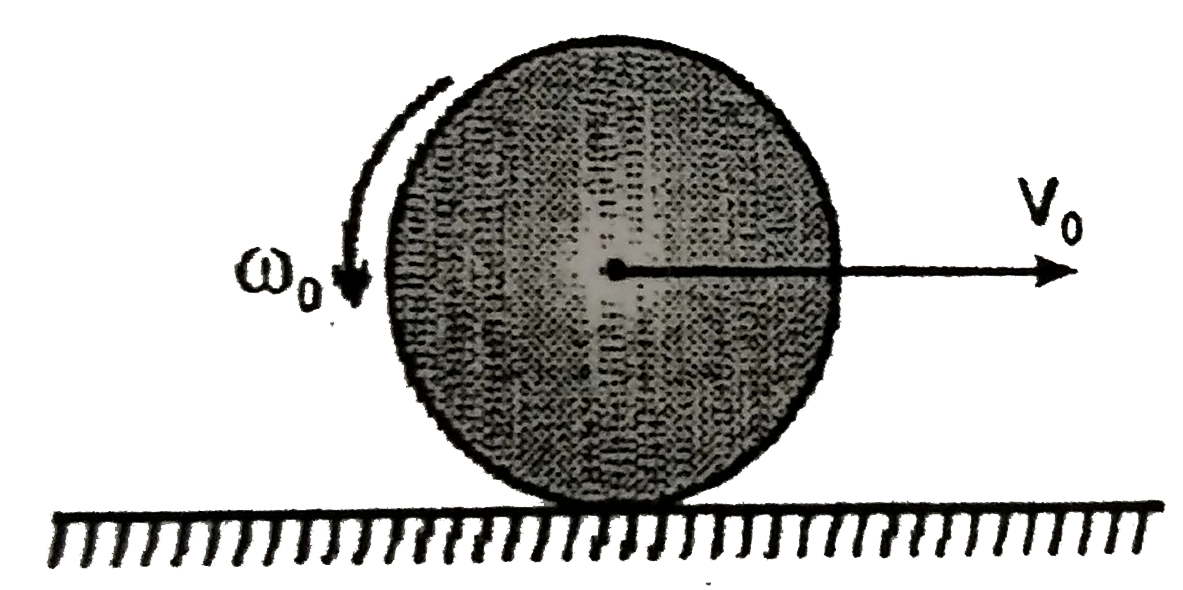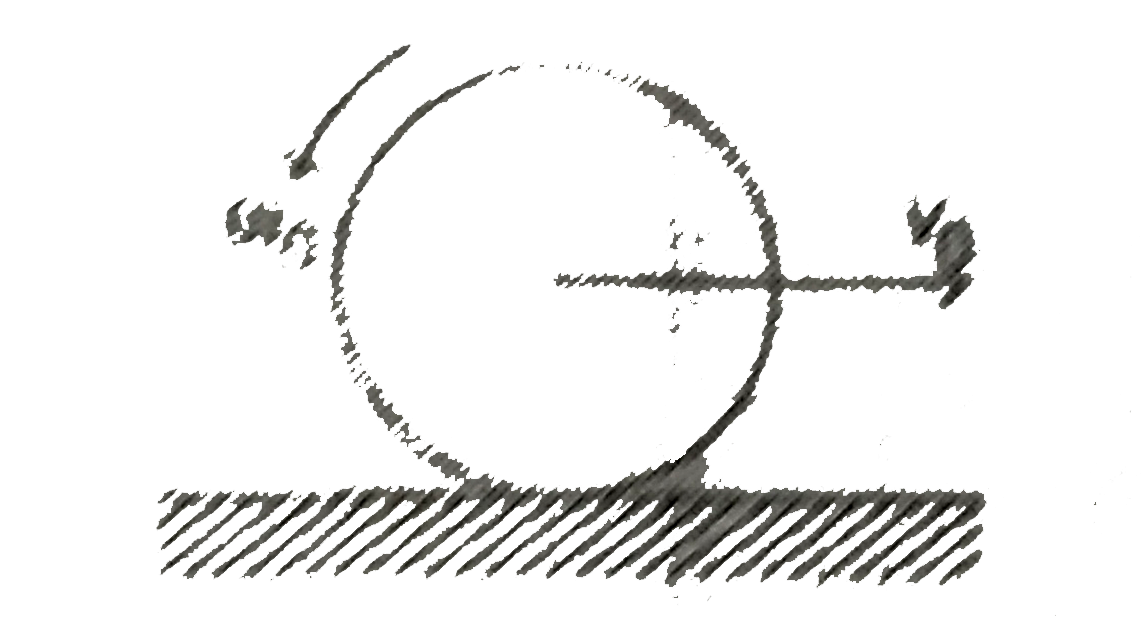A uniform circular disc placed on a rough horizontal surface has initially a velocity v0 and an angular velocity ω0 as shown in the figure. The disc comes to rest after moving some distance in the direction of motion. Then v0rω0 is.
 .
.
1/2
1
3/2
2
The correct Answer is:A
for translational motion v=v0+at
0=v0−fmt⇒t=mv0f….(1)
for rotational motion
ω=ω0+αt
ω=ω0+τIt
0=ω0−RfIt
t=ω0IRf
for disc I=12MR2
t=12mR2.ω0Rf⇒t=mRω02f ....(2)
from (1) & (2)
mv0f=mRω02f⇒v0Rω0=12.
 .
.
Similar Questions
A uniform circular disc placed on a horizontal rough surface has initially a velocity v0 and an angular velocity ω0 as shown in the figure. The disc comes to rest after moving some distance in the direction of motion. Then v0/rω0 is :

View SolutionA uniform circular disc placed on a horizontal rough surface has initially a velocity v0 and an angular velocity ω0 as shown in the figure. The disc comes to rest after moving some distance in the direction of motion. Then v0/ω0 is :

View Solution
Knowledge Check
A uniform circular disc placed on a horizontal rough surface has initially a velocity v0 and an angular velocity ω0 as shown in the figure. The disc comes to rest after moving some distance in the direction of motion. Then v0/ω0 is :
 Ar/2BrC3r/2D2
Ar/2BrC3r/2D2A uniform circular disc of radius r . 1placed on a rough horizontal plane has initial velocity v0 and an angular velocity ω0 as shown. The disc comes to rest after moving some distance in the direction of motion. Then
 Athe friction force acts in the backwards directionBthe point of contact of disc with ground has zero velocityCv0 must be equal to rω02 in magnitudeDv0 must be equal to 2rω0 in magnitude
Athe friction force acts in the backwards directionBthe point of contact of disc with ground has zero velocityCv0 must be equal to rω02 in magnitudeDv0 must be equal to 2rω0 in magnitudea uniform circular disc of radiu8s r placed on a roughn horizontal plane has initial velocity v0 and an angul,ar velocity ω0 has shown The disc comes to rest after moving some distance in the direction of motion. Then
 Athe friction force acting in the towards directionBthe point of contact of disc with ground has initially zero velocityCv0 must be equal to rω0/2 in magnitudeDv0 must be equal to 2rω0 in magnitude
Athe friction force acting in the towards directionBthe point of contact of disc with ground has initially zero velocityCv0 must be equal to rω0/2 in magnitudeDv0 must be equal to 2rω0 in magnitude
a uniform circular disc of radiu8s r placed on a roughn horizontal plane has initial velocity v0 and an angul,ar velocity ω0 has shown The disc comes to rest after moving some distance in the direction of motion. Then

View SolutionA uniform circular disc of radius r placed on a rough horizontal plane has initial velocity v0 and angular ω0 as shown. The disc comes to rest after moving some distance in the direction of motion. Then

View SolutionA uniform circular disc of radius r is placed on a rough horizontal surface and given a linear velocity v0 and angular velocity ω0 as shown. The disc comes to rest after moving some distance to the right. It follows that

View SolutionA uniform sphere of radius R is palced on a rough horizontal surface and given a linear velocity v0 and an angular velocity ω0 as shown . If the angular velocity and the linear velocity both become zero simultaneously, then
View SolutionA uniform circular disc of radius r is placed on a rough horizontal surface and given a linear velocity v0 and angular velocity ω0 as shown. The disc comes to rest after moving some distance to the right. It follows that

View Solution
